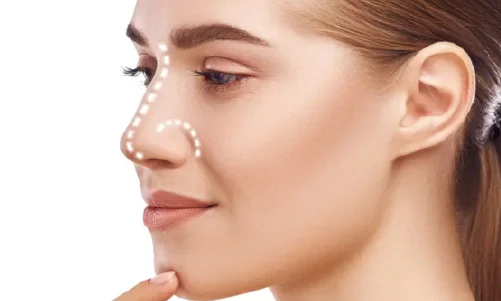Surgically improving the nose's look or functionality is the goal of rhinoplasty, also referred to as a "nose job." It addresses complications such as deviated septum, breathing difficulties, and aesthetic concerns. If you're considering a rhinoplasty, reach out to us, or book a direct appointment with our plastic surgeon. At the CK Birla Hospital, we are dedicated to ensuring that your rhinoplasty is as safe, comfortable, and effective as possible. We're here to guide you every step of the way toward a successful recovery.

Delaying or improperly performing rhinoplasty can pose risks, like:
Consultation with a plastic surgeon assesses concerns, timing, risks, and benefits. Early intervention and technique are crucial for optimal results.
Rhinoplasty operations are mostly of two types:
Open Rhinoplasty
Closed Rhinoplasty
Other types of rhinoplasty include:
Cosmetic rhinoplasty –
Nonsurgical rhinoplasty (filler rhinoplasty)
Functional Rhinoplasty
Secondary Rhinoplasty
The cost of a rhinoplasty varies as per the specific type advised by a healthcare provider, such as:
The cost can also vary widely depending on several factors, including the location, the extent of the procedure, the surgeon’s experience, and the hospital’s pricing structure.
To get an explicit estimate for the cost of rhinoplasty at the CK Birla Hospital, contact the hospital directly. Additionally, you can consult with our board-certified plastic surgeon to discuss your specific needs and receive a personalised quote for the procedure.
The diagnosis before rhinoplasty involves several components, such as:
Following these instructions closely ensures a safe and successful procedure, optimising recovery outcomes. You should discuss any worries you have with the surgeon.
A good candidate for rhinoplasty desires aesthetic or functional improvement of the nose is in good physical and mental health, and has realistic expectations about the outcomes of the procedure.
Some common reasons as to why people undergo rhinoplasty include correcting nasal asymmetry, improving nasal shape or size, enhancing breathing function, addressing nasal trauma, and refining the overall appearance of the nose.
Rhinoplasty is typically performed under general anaesthesia, involving either open or closed techniques. Surgeons reshape the nasal bones and cartilage to achieve desired aesthetic or functional results.
While initial results of rhinoplasty are noticeable within a few weeks, full recovery and final results may take up to a year as swelling subsides and tissues settle.